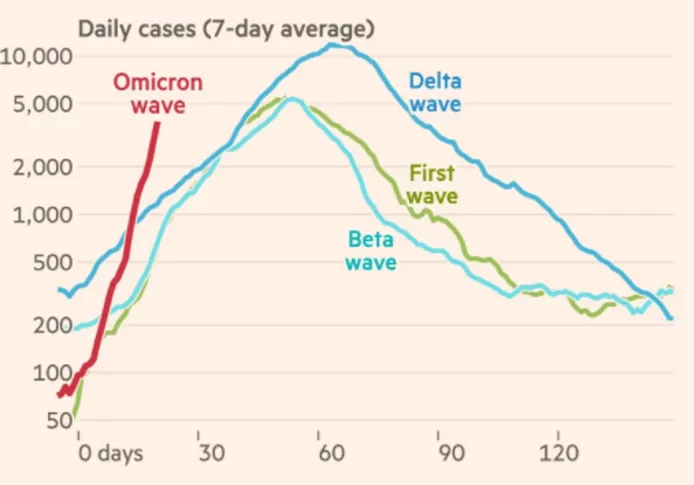Omicron is already present in West Africa

The Omicron variant, which was thought to be expanding mainly in Southern Africa, is also present in West Africa. This piece of information has gone somewhat unnoticed in the flood of global news about the Covid-19 epidemic.
This news comes from one of the first cases identified in France. The patient had just returned from a trip to Nigeria, where he was infected. Two other travelers from Nigeria were also detected positive to the new variant upon their arrival in Canada.
Omicron is now present in about thirty countries, since one week, but the number of cases is certainly very underestimated because the new variant of Covid-19 seems to circulate already in other areas of the African continent. This is the case, for example, in Nigeria, where the Omicron variant has been identified after a French traveler, returning from this West African country, tested positive when he got off the plane.
The matter is being taken very seriously, as three other Nigerian travelers from South Africa have also tested positive for the Omicron variant. “Samples taken from tests requested from all travelers two days after their arrival in Nigeria tested positive for the Omicron variant in three people who had previously traveled to South Africa,” the Nigerian Center for Disease Control said.
In a related development, neighboring Ghana also said it had identified several patients infected with the variant, people who had come from either Nigeria or South Africa.
More importantly, the Omicron variant may have been present in West Africa for several weeks. The Nigerian Center for Disease Control declared on Wednesday, December 1, that “retrospective sequencing of samples taken in October 2021 from confirmed cases of travelers to South Africa shows that the Omicron variant was already present”, information that was denied a few hours later, but Nigeria is now being closely scrutinized.
In addition to the infected travelers discovered in France, Canada has also identified two cases of Covid-19 with the Omicron variant in travelers arriving from Nigeria. Canada, which had already blocked flights from southern Africa, immediately closed its borders to Nigerian nationals and Egyptians, where one case was reported.
With barely 3,000 deaths for just over 200,000 cases, Nigeria is a country where Covid statistics are very unreliable, and the country’s low vaccination coverage, barely 4%, makes an outbreak of the epidemic very likely in the coming weeks.
Graph shows how contagious omicron is
A chart by a “Financial Times” journalist does not bode well. John Burn-Murdoch compares the rise of the different waves in the South African province of Gauteng, where the dreaded omikron variant is now rampant. It is striking how steeply the red omikron line rises. Throughout South Africa, daily infections have risen from 2,273 to 11,535 in just four days. Scientific research has also shown that the risk of reinfection is three times higher with the new variant.

Burn-Murdoch explains that the number of hospital admissions is also clearly increasing in Gauteng in a thread on Twitter.
Yesterday, omicron followed the curve of the second wave, now it is already rising slightly. How come? Because sometimes, the data takes a while. For example, before November 28, 580 hospital admissions were initially registered, in the most recent report, they are already at 788. So count on a week before we have a complete picture, John explained.
In addition, the infections are still mainly among the younger population. This category is by definition less likely to end up in a hospital.
Reinfections
Scientific research also shows that the risk of reinfection is three times higher with the omicron variant. In addition, the data of 2,796,982 infected persons were studied. In 35,670 cases, it was a reinfection.
FYI, cases are only considered a reinfection if at least 90 days between the two positive tests. “From mid-November, we notice a clear increase in the number of reinfections, both in Gauteng and in the rest of South Africa,” said researcher Juliet RC Pulliam. The results have yet to be confirmed by a peer review.
An important caveat here is that how many patients were vaccinated with such a reinfection is not yet known. Therefore, it is not yet clear whether the omicron variant can penetrate the defense shield of the vaccines. In South Africa, just under 25 percent of the population is fully vaccinated.
“We think the number of cases will rise exponentially in all provinces of the country,” said researcher Anne von Gottberg of the National Institute of Communicable Diseases. “For the time being, we still assume that vaccines offer sufficient protection against really serious illnesses and deaths.”




